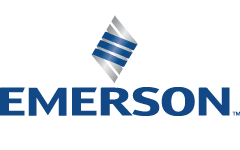When Will Inflation End?
“Is there a risk we would go too far? Certainly, there’s a risk. The bigger mistake to make ... would be to fail to restore price stability.”
Federal Reserve Chairman Jerome Powell, Wednesday, June 29, 2022, at the European Bank’s annual economic policy conference in Portugal
With those comments, the Federal Reserve Chairman was signaling that the Fed was more concerned about the risk of failing to stamp out inflation than the possibility of instigating a recession by raising interest rates too high. He went on to say that the central bank must increase rates rapidly to avert inflation becoming entrenched in the economy. True to form, the Federal Reserve approved its third consecutive interest rate increase of 0.75 percentage points on September 21, 2022. Many analysts now anticipate the benchmark federal fund rate will be slightly above 4.25% by year-end.
Meanwhile, central banks in Canada, Europe and the U.K. are also raising rates amid surging price pressures. According to the economists at Credit Suisse Group AG, it is the fastest tightening of monetary policy since 1989.
Sometimes commentators are overly focused on the Fed and interest rates while there are other forces working to naturally resolve inflationary pressures such as supply increases and declining demand.
How will inflation end? One fact is for sure – the Fed and establishment economists in academia and the administration erred on their inflation estimates until the reality of persistent and elevated inflation became too obvious to deny. The earlier optimism that inflation would be “transitory” reveals that policy makers can get the diagnosis, degree and duration of inflation wrong. Their resulting policy decisions influence the economy and, in turn, markets. The takeaway is that no one knows for certain how inflation will play out. And, just as the Fed was slow to predict the upswing and stickiness, it may also misjudge the recovery to normal price levels.
Inflation may not be transitory, but it isn’t permanent either. There is evidence of demand slowing as consumers shift away from more expensive goods and services to select cheaper alternatives or postpone purchases, easing pressure on prices. In September, FedEx Corp. reported a global slowdown in business with package volume down 11% from the prior year, the third straight quarter of declines. Rental inflation, which is 40% of core CPI, is softening as apartment rents are falling for the first time in two years. A large pipeline of apartments is finally available after COVID construction pauses. Sometimes commentators are overly focused on the Fed and interest rates while there are other forces working to naturally resolve inflationary pressures such as supply increases and declining demand.
As we’ve pointed out in previous quarterly letters, stocks – representing the ownership of real assets – have historically been an effective inflation hedge. Trading in and out of stocks to avoid volatility by attempting to presciently forecast economic directions can be self-destructive. We use volatility as an opportunity to add to positions when market prices fall below our appraisal of economic value. Our approach is to invest long-term through investment cycles with a balanced, well-diversified portfolio as the best opportunity to achieve positive inflation-adjusted returns.
September 30, 3022
COMPANY COMMENTS
Comments follow regarding common stocks of interest to clients with stock portfolios managed by Delta Asset Management. This commentary is not a recommendation to purchase or sell but a summary of Delta’s review during the quarter.
Adobe Inc. { ADBE }
Adobe is one of the most diversified software companies in the world with solutions that span from digital media to digital design experience. Based in San Jose, CA, Adobe’s products are organized primarily into two segments: the flagship Digital Media segment, which comprises over 70% of the revenue and includes the Creative Cloud and Document Cloud business with such applications as Acrobat, Flash Player and Photoshop; and the Digital Experience segment, which includes the legacy web analytics business.
Founded in 1982, the company’s products are used by photographers, video editors, graphic and experience designers, game developers and content creators from businesses of all sizes. Its products and services are marketed directly to enterprise customers through its sales force and local field offices.
Adobe licenses its products to end users through its own app and website using term subscription and pay-per-use models. In fact, nearly all of its products are now sold through a subscription software model where customers purchase access to a product for a specific period of time during which they have the right to use the most recent version. The company automatically provides updates and enhancements when available. The benefits of Adobe’s subscription model include improved revenue visibility, the elimination of piracy and a much lower cost to provide the service.
One of the company’s first products, Acrobat and the well-known PDF file standard created by the company, is now a $2 billion business. The ascent of smartphones and tablets combined with flexible and mobile work arrangements have made this flexible-use product more relevant than ever. Adobe believes the addressable market for Document Cloud is greater than $200 billion.
Another iconic product, Photoshop, introduced in 1989, has quickly become the industry standard for image editing software. Adobe has consistently upgraded the product, introducing new features and adding applications. Such products benefit from a network effect. By virtue of widespread adoption, users have a significant incentive to become well-versed and invested in the software. Photoshop has become such a standard in the creative world that major university design programs incorporate Adobe’s Creative Cloud applications in their curriculum.
The benefits of Adobe’s subscription model include improved revenue visibility, the elimination of piracy and a much lower cost to provide the service.
In September, Adobe announced the acquisition of Figma – a web-based interface collaborative design platform – for approximately $20 billion in cash and stock. The deal is expected to close in 2023. The transaction has been criticized for the high multiple of revenue paid, and Adobe’s stock price has been under pressure since the deal was announced. On the positive side, Figma has recently enjoyed 100% growth rates and its net retention rate – the rate of spending last year’s customers spent this year – is 150%.
Shantanu Narayen, the company’s CEO since 2007, is responsible for converting to the subscription model. Post this transition, top line and margin growth accelerated. In place of paying a dividend, the company reinvests its substantial cash flow in its existing businesses and new acquisitions.
The volatility of the stock price created by the Figma acquisition has enabled us to initiate a position. Although the valuation criticism has merit, the controversy has obscured its resilient core of attractive businesses and the long-term potential of Figma. Based on our assumptions, we project Adobe’s stock price offers a long-term annual rate of return of 12%.
Emerson { EMR }
Emerson, formed in 1890 and headquartered in St. Louis, is a diversified global manufacturing company, which provides solutions to customers by bringing technology and engineering together in the industrial, commercial and consumer markets around the world. The company operates in a wide variety of businesses, including diagnostic controls and measurement products for industrial processes, data network power, manufacturing automation and climate technologies. Emerson has a new CEO, Lal Karsanbhai, who assumed his role in February 2021. He was formerly head of the automation solutions segment and is a 26-year veteran of the firm. Karsanbhai is only the fifth CEO in 45 years.
Although Emerson generated over $18 billion in global sales in 2021, it has the flexibility of a smaller, nimbler player due to its regional operating structure. Emerson innovates, engineers, sources, manufactures and sells within each region of the world. What is made in Asia is sold in Asia, what is made in Europe is sold in Europe and what is made in the U.S. is sold in the US. Sales in emerging markets have expanded to over a third of sales.
Emerson’s competitive advantages stem from its industry-leading installed base of equipment, valued at over $120 billion, which allow it to benefit from decades of high margin parts and service sales. In addition, its manufacturing scale provides a cost advantage versus most competitors. Emerson has shifted from a pure manufacturer to, in addition, providing services such as equipment monitoring for maintenance and repairs, and consultancy on efficiency and manufacturing. Skilled services like these are generally provided under long-term agreements provided at higher margins than equipment sales.
The Automation Solutions segment (64% of total company revenues) offers leading technology and system solutions that allow the company to earn profit margins comfortably above peer levels. Customers from various industries, including oil and gas, power, chemical and life sciences, pay a premium for Emerson’s complete front-to-back automation solutions. Emerson estimates the total addressable market for automation is over $200 billion.
Emerson’s competitive advantages stem from its industry-leading installed base of equipment, valued at over $120 billion, which allow it to benefit from decades of high margin parts and service sales.
Emerson spends over $400 million a year on research and development resulting in new and value-added services. Emerson’s Plantweb, its control engineering software, was ranked number one in its category. According to the Boston Consulting Group, 40% of Internet of Things (IoT) customers prefer to use traditional and well-established companies for IoT solutions. The IoT describes the network of connecting physical equipment through sensors and software to other devices to monitor and exchange data. Analytics gleaned from customers is valuable for Emerson as it leads to innovative technology and a tailored software solution for the customer. Emerson also benefits from high margin recurring software sales as companies typically update their system software every few years. The company is increasing its investments in engineering and development spending as well as sales, customer service and project management globally to enhance its relationship with customers, support product development and increase market penetration.
Emerson is still a cyclical company and does face risks within its portfolio of businesses. Any slowdown in the global economy or reduced capital spending in the oil & gas industry would have a negative impact on revenue and profits. Emerson has historically been an acquisitive company in order to gain technology and expand its market footprint. There is always the risk of overpaying or a failure to integrate new businesses leading to a less-than-adequate return on investment.
We believe the company’s extensive installed base and long-term customer relationships should provide support for its transition to a services and solutions strategy. We expect Emerson will grow revenues in the low single digits on average with cash flow margins of 21% over our 10-year modeling period. Based on these assumptions, our stock valuation model indicates Emerson’s current stock price offers an average annual long-term rate of return of approximately 7.5%.
Intel Corporation { INTC }
Intel is the world’s largest semiconductor chipmaker by revenue. The company supplies the computing industry with the chips, boards, systems and software that are the primary components of computer architecture. Intel is the leading designer and manufacturer of microprocessors for the global personal computer (PC) and data center markets. Intel pioneered the x86 architecture for microprocessors used in most PCs and data centers today. The company currently operates in two main business groups: the more mature Client Computing Group, which supplies chips for personal computing; and its Data-Centric Group, which includes the more advanced and faster-growing computing segments such as Internet of Things (IoT), Artificial Intelligence (AI), automotive and 5G networks.
After decades of leadership in the design and manufacture of complex chips, Intel has developed important advantages, including manufacturing scale, broad product scope and intangible assets related to its advanced intellectual property. This scaling advantage is defended by higher–than-peer research and development (R&D) and capital spending that enable the company to deliver a more predictable cadence of products that move, store and process data at a lower cost. Intel’s cost advantage is critical in a capital-intensive industry where large-scale manufacturing facilities, or foundries, cost $20 billion or more to build, which creates significant barriers to entry.
After decades of leadership in the design and manufacture of complex chips, Intel has developed important advantages, including manufacturing scale, broad product scope and intangible assets related to its advanced intellectual property.
Intel is facing challenges both cyclical and structural, such as near-term demand weakness in PCs, increased competition and process manufacturing setbacks. Recently, Intel is facing weaker demand for PC and data center chips due to economic weakness, product delays and supply chain disruptions related to continued COVID protocols in Asia. Competition is Intel’s primary long-term challenge. Intel has a dominant share in PCs and x86-based servers, but recent delays in process upgrades have allowed its competitors to gain market share. In addition, some customers have begun to design their own chips to diversify their supply chain and to have more control over major supply inputs. We believe the consolidated nature of the industry, limited chip manufacturing capacity globally and the years it takes to bring on new capacity make shifts in market share difficult. Intel has implemented a multi-year strategic plan to regain its footing requiring substantial investments in R&D and infrastructure, but cyclical economic activity is slowing its progress in the near term.
Long-term prospects for the semiconductor industry remain bright. Intel has a dominant position in the mature PC space, which has modest growth expectations, but the company continues to invest to advance the business. Gaming computers and consoles, both of which rely on x86 processors for speed and reliability, continue to be a growth driver for Intel. We expect Intel to continue to benefit from the growth in cloud computing, which requires huge data center build-outs, increasing chip demand. This digitalization of everything from the technology sectors to businesses – such as industrials, health care, finance and communications among others – creates data that must be stored, analyzed and transmitted. In addition, Intel’s more mature businesses generate the free cash flow needed to invest in faster-growing areas such as IoT, AI and 5G that are still in the early innings of their development.
Maintaining a consistent cadence of technological advancements in chips is critical to Intel’s continued success. On February 15, 2021, Intel hired Pat Gelsinger, a tech veteran and former CEO of VMware, Inc., as its new CEO. Prior to VMware, Gelsinger was a 30-year veteran of Intel and was the company’s first Chief Technology Officer, leading development of 14 different microprocessor programs. An engineer with deep knowledge of the semiconductor space, he has laid out a road map to generate a faster cadence of chip advancements and surpass its chip rivals in advanced chip processes. Beyond chip advancements, Intel has launched Intel Foundry Services to manufacture chips for designers such as Amazon Web Services, Advanced Micro Devices (AMD) and Qualcomm Incorporated. The company recently broke ground on a $20 billion facility in Ohio with additional facilities planned for Arizona as well as Europe. This new revenue stream will take years to fully develop, but it will grow Intel’s chip capacity in a time of increasing chip demand as society becomes increasingly digital over time.
Based on the financial characteristics we have outlined, we assume that Intel can average low single-digit revenue growth over the next decade. At this pace of growth and given improved process efficiency against the competitive backdrop outlined above, we believe operating margins can average approximately 20% during the period. Accordingly, our stock valuation model indicates a long-term annual rate of return of approximately 16%.
Cracker Barrel Old Country Store, Inc. { CBRL }
Cracker Barrel Old Country Store, based in Lebanon, TN, operates more than 660 Cracker Barrel restaurants and gift stores in 45 states. Its locations welcome approximately 225 million guests in a normal year and, although highway travelers make up about 35% to 40% of visits, the remaining 60% to 65% are made up of locals.
The format of the stores consists of a rustic old country store design offering a full-service restaurant menu for three meal periods. The menu features home-style country food and a wide variety of decorative and functional items, such as rocking chairs, holiday and seasonal gifts, toys, apparel, cookware and foods. All of the stores are freestanding buildings and consist of 70% of square footage dedicated to the restaurant, kitchens and service area with the remainder for the gift shop.
Breakfast can be ordered at any time of the day. The restaurants generated 79% of the revenue in 2021, and the balance was contributed by the gift shop. The average check per guest in 2021 was $11.40, which represents a 2.5% increase over the prior year. The typical location serves an average of approximately 5,500 guests per week.
In October 2019, the company acquired 100% ownership of Maple Street Biscuit Company (MSBC). The concept serves biscuit-inspired entrees as well as freshly roasted coffee with a proprietary blend and a limited selection of beer and wine in certain locations. MSBC has a smaller footprint than the Cracker Barrell store and has operating hours limited to the breakfast and lunch segments. As of September 2022, the brand had approximately 40 company-owned locations. Average annual sales are $1.2 million per unit.
Cracker Barrel also hopes to drive revenue via its delivery business, which gained traction during the COVID epidemic. Takeout and delivery account for roughly 20% of the chain’s sales, a percentage that has not changed much even as customers returned to in-house dining. Cracker Barrel is increasing its digital footprint by starting a pair of virtual brands for takeout and delivery. The intent is to appeal to the customer who wants the convenience of carryout but at a higher quality offering than most fast-food concepts.
Cracker Barrel owns a significant amount of real estate, and the company has periodically sold and leased back stores to improve its overall efficiency and return on capital by unlocking real estate value.
This year’s elevated gas prices during the late spring and early summer led to a decline in restaurant traffic. In addition, inflation has put pressure on margins. In response, the company has instituted operational efficiencies, including a new point of sale system, capturing additional data and improving ordering and store inventory.
Cracker Barrel owns a significant amount of real estate, and the company has periodically sold and leased back stores to improve its overall efficiency and return on capital by unlocking real estate value. As of 2021 fiscal year-end, 43% of assets on the balance sheet were listed as Land and Buildings. That number is down from 75% in 2014. The company has used proceeds to fund growth concepts and return capital to shareholders via buybacks.
The company pays a quarterly dividend of $1.30 per share. It suspended its dividend in early 2020 during the pandemic but resumed payments in August 2021. Its board has authorized a stock buyback program of up to $200 million, which replaced an earlier authorization. Based on our assumptions and our stock valuation model, we project Cracker Barrel’s current stock price offers a long-term annual rate of return of just over 8%.
Dated: September 30, 2022
Specific securities were included for illustrative purposes based upon a summary of our review during the most recent quarter. Individual portfolios will vary in their holdings over time in relation to others. Information on other individual holdings is available upon request. The information contained herein has been obtained from sources believed to be reliable but cannot be guaranteed for accuracy. The opinions expressed are subject to change from time to time and do not constitute a recommendation to purchase or sell any security nor to engage in any particular investment strategy. Any projections are hypothetical in nature, do not reflect actual investment results and are not a guarantee of future results and are based upon certain assumptions subject to change as well as market conditions. Actual results may also vary to a material degree due to external factors beyond the scope and control of the projections and assumptions. This document is for informational purposes only. The views stated in this document should not be construed, directly or indirectly, or as specific investment advice for an individual’s situation. Investors should be aware that there are risks inherent in all investments, such as fluctuations in investment principal. With any investment vehicle, past performance is not a guarantee of future results.





